Samsung Galaxy S 2 (International) Review - The Best, Redefined
by Brian Klug & Anand Lal Shimpi on September 11, 2011 11:06 AM EST- Posted in
- Smartphones
- Samsung
- Galaxy S II
- Exynos
- Mobile
SGS2 Intro
The road to our Galaxy S2 review has been a long one. The first time we saw the device was at Mobile World Congress, where it was initially announced. There, Anand and myself played with and hurriedly benchmarked one and came away more than a bit disappointed with performance. I set my expectations based on our initial experience and came away from the conference prepared to be underwhelmed when the device launched internationally and stateside. There was never any doubt in my mind that the device would be a runaway success just like the first one, but I still came away disappointed.
Boy was I wrong. The device that launched internationally is completely different, in the positive sense.
It took a long time for us to get an international Galaxy S 2 in our hands, but we finally got one, and for the past few weeks I’ve been using it as my primary device here in the US on AT&T. It’s not an exaggeration at all to say that we’ve received more requests for a Samsung Galaxy S 2 (henceforth SGS2) review than any other smartphone, by at least an order of magnitude. The tomes of information already written about this phone has made it all the more daunting to dive head-first into a comprehensive exploration of the device, and we’ve tried to do our best.
Physical Impressions
First things first, how does the phone feel? I keep going back to MWC because that’s when first impressions were made, and thankfully in-hand feel didn’t change at all since then. The SGS2’s back eschews the plasticky smooth back of the previous SGS, and instead includes a textured battery door which snaps on. The new battery cover doesn’t wrap around to the front, instead only snapping into the back. There’s a notch in the top right which you can get a thumbnail into and pry the battery cover off with.
Moving to a textured surface instead of the SGS’ oft-derided slick plastic back gives the device a much needed boost of in-hand-feel. When I first encountered the phone at MWC I was shocked how much of a difference this simple change made. The edges are still lipped in smooth glossy plastic, but on the whole the device feels much more competent than SGS1. It appears to be the same material, but now there’s much less of a propensity for scratching or slipping around. I feel like the design language of the original SGS is still here, but it’s all grown up.
It’s impossible to go any further without noting just how thin the SGS2 is. Samsung has taken something of an obsession with holding the thickness crowns for its products, something the SGS2 did indeed hold for some time, at 8.49 mm at its thinnest point. Like the other SGS phones, there’s a bulge at the very bottom which throws a bit of a wrench into the device being completely uniform in profile. It is here that Samsung also locates antennas and the loudspeaker, though the real purpose for this bulge seems to be at least somewhat ergonomic. This bulge is around 10.1 mm thick, which is 1.61 mm thicker than the rest of the phone. For comparison, the old SGS was around 10.0 mm thick all over. As a result, the SGS2 is on the whole noticeably thinner, all while dramatically increasing power and features which we’ll get to in a moment.
Next up is the relocation of the microUSB port. The original SGS’ microUSB port placement drew a lot of discussion, as it’s at top left and behind a small door on the international variant and most regional variants. The SGS2 however relocates the microUSB port to dead center of the bottom face of the device, and just right of it is the primary microphone port. I got used to seeing the microUSB port up top and understood that choice, but having things at the bottom just feels more natural.
The volume rocker and power button are placed basically in the same position on SGS2 as the previous generation. Power is on the right about three quarters of the way up the right side of the device, and volume on the left side positioned with the top of the volume rocker in-line with the top of the power button. Thankfully these buttons are communicative and clicky as ever, I can’t find any fault with them.
There’s a notch which looks like the slot for a hand strap just above the volume rocker. There’s no microphone attached on the inside to this area, so it’s a bit unclear to me what this is for if it isn’t for a hand strap.
At top is another microphone port for both noise cancellation during calls using a discrete solution by Audience. Right next to it is the standard 3.5mm headphone jack.
The front of SGS2 is one unbroken glass surface, just like you’d expect for a top-tier smartphone launching this generation. Starting at the top is the 2 MP front facing camera, and right next to it is the proximity sensor and ambient light sensor. Of course, the real centerpiece is the 4.3" WVGA Super AMOLED+ display (henceforth SAMOLED+) which we’ll talk more about in a moment.


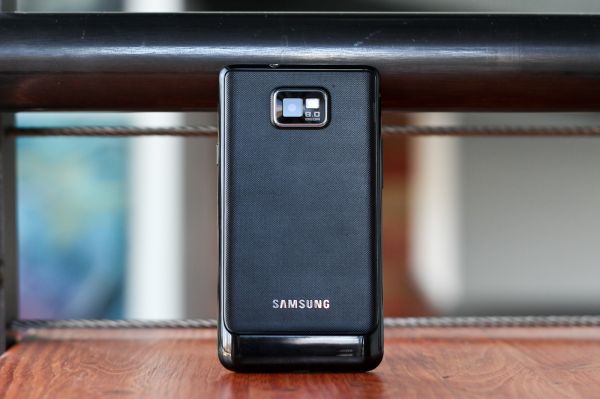

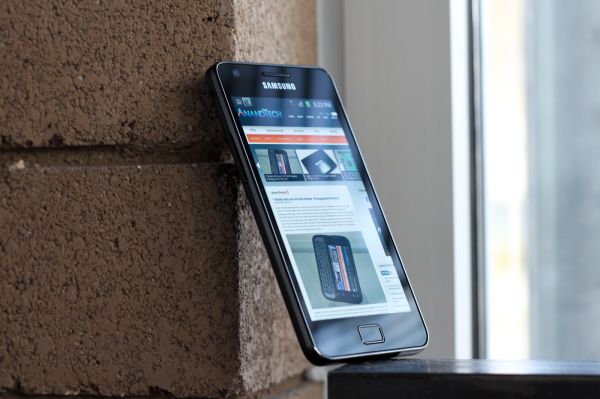
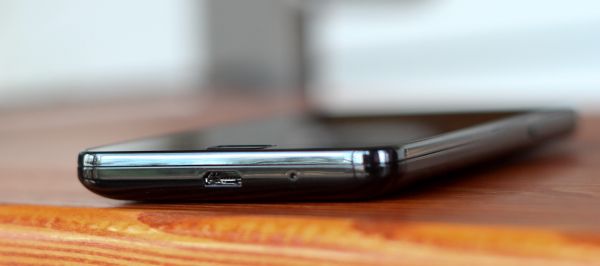
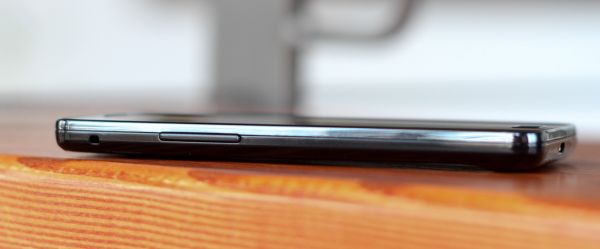
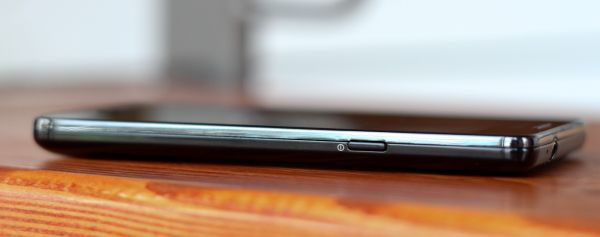
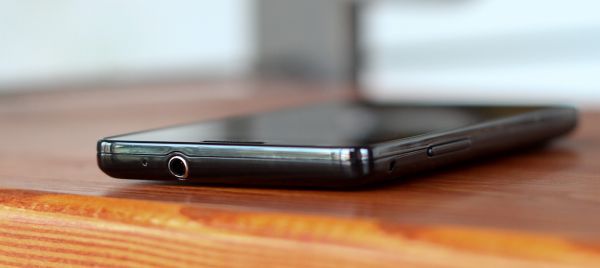
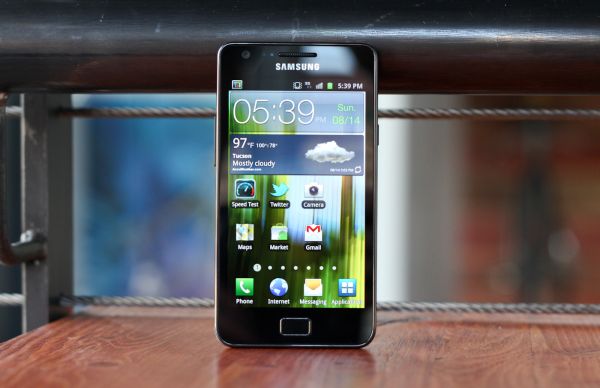








132 Comments
View All Comments
Astri - Sunday, September 11, 2011 - link
Great work, the difference is obvious! Cant wait for the releasethanks for your reply. is good to know that is not hardware issue. it gives us hopes for quality gradients in future sw updates
supercurio - Sunday, September 11, 2011 - link
I'm glad it works for you ;)Don't expect Samsung to change the screen rendering in an update because if some would prefer "Native", others would not after loosing some perceived sharpness even if it's an artificial one that creates halos and artifacts.
Anyway the app is here, and free!
Jon Irenicus - Monday, September 12, 2011 - link
Your audio section scared me about the audio quality, is there any chance the US sprint variant will use a different DAC? or get a tweaked version of the Yamaha DAC?supercurio - Monday, September 12, 2011 - link
From dumps I received AT&T and Sprint versions are exactly the same for audio.T-Mobile, I'm not sure yet, I got some dumps from an non released device with a separate Yamaha headphone+speaker driver that looked like a potential T-Mobile Galaxy S II.
No idea about the DAC itself today.
Gnarr - Sunday, September 11, 2011 - link
"TouchWiz 4.0 is a much cleaner, less claustrophobic, and considerably less garish experience."http://en.wikipedia.org/wiki/Claustrophobia
DeciusStrabo - Monday, September 12, 2011 - link
"something feels claustrophobic" isn't an uncommon phrase for saying something feels small, cluttered and cramped.jigglywiggly - Sunday, September 11, 2011 - link
THIS IS THE MOST INDEPTH REVIEW FOR A PHONE EVAROmid.M - Monday, September 12, 2011 - link
And their childishness?Look what they've done to the American versions of the SGS2. Childish, for wanting their own "version" of an amazing phone. Why mess with a great thing? Oh, because you don't want to just compete on service--as you should--you want "exclusive" features on your version of the phone?
Wish I was on AT&T so I could import the Int'l version.
Brian,
I'm honestly amazed at your 180. I recall you being a little "so what?" about the SGS2 (this is way back before summer 2011) and now it looks to be your favorite smartphone (I think). And we know you're a harsh critic :)
I hope we get to see soon what the SGS3 might look like: will Samsung keep with the Exynos SoC and add LTE to compete with Krait? What will the next gen Mali GPU look like? Next Gen SAMOLED? So curious...and yet, we know an SGS3 wouldn't reach America for at least another 18 months...hopefully, VZW customers won't be let down by a Nexus Prime (and that includes bloat).
The addition of Supercurio (Francois) is perfect; you have a talented dev who is passionate enough to explain to the layman how things work. He's helped me on more than one occasion when I had a Fascinate :)
Great work, Anand, Brian, and Francois. One of the best reviews I've ever read on any product. No question.
@moids
ph00ny - Monday, September 12, 2011 - link
Agreed. My main reason for purchasing the international version this time around was to receive more timely updates along with less restrictions.As for next gen, there is already a LTE version of SGS2 and ARM already announced the next gen Mali graphics quite some time ago. Regardless, no one knows if samsung will use mali's gpu on the SGS3 and hopefully the SGS3 will come in an ATT compatible flavor when it's released
Brian Klug - Monday, September 12, 2011 - link
I definitely admit that I was very *meh* about the phone after seeing it at MWC. It clearly has come a really, really long way, and now it's my absolute favorite Android device because of all those reasons outlined above - just incredible smoothness and huge performance. :)-Brian